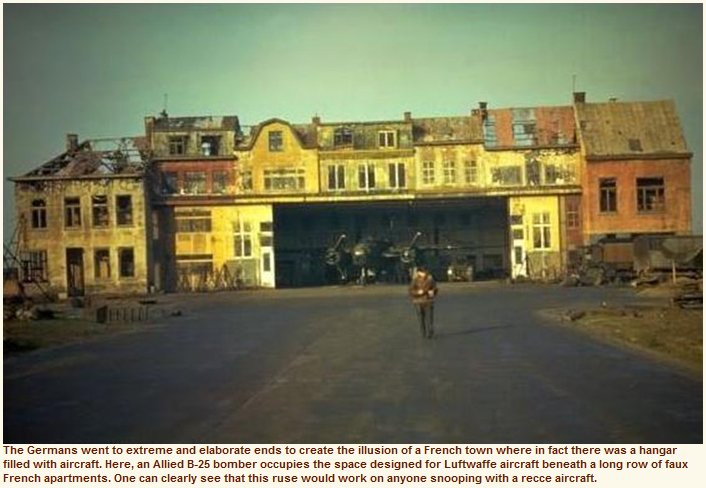Deception in war reached a crescendo in the latter stages of World War 2, with the allies’ use of General George S. Patton’s imaginary First US Army Group (FUSAG) to pin German attention on the Pas de Calais for more than a month after the real D-Day landings in Normandy. In addition to direct propaganda and an extensive radio network generating fake messages to show the size of FUSAG, the allies also created entire dummy airfields and flotillas of fake landing craft to show up on German air recon photos. The fake planes, aircraft, and buildings were a key part of maintaining the fictitious threat of another, bigger invasion — which successfully kept a large German force away from the real landings.
Less well-known is that the Germans also indulged in this kind of deception:
In what could easily be the finest and boldest example of death-defying and cheeky nose-thumbing during the Second World War or any conflict for that matter, bomber and intruder crews of the Royal Air Force and USAAF are reputed to have bombed the Luftwaffe’s decoy airfields and dummy aircraft, not with high explosives or incendiaries, but with nothing more than dummy bombs made of wood, and painted with the smug remark “Wood for Wood”… all just to make a point.
Throughout all theatres of war, during the Second World War, from China to Holland to Kent, air forces, phsy-ops units and logistics people constructed dummy targets such as airfields, factories, truck parks, convoys and even ships, out of wood, canvas, burlap, or inflatable rubber. The decoy airfields were often populated with dummy aircraft and vehicles of such high quality, that even low flying recce aircraft with photographic equipment would have hard time telling the difference between the dummies and the real thing. The decoy airfields and dummy aircraft served several purposes simultaneously. They confused snooping enemy aircraft and hence planners as to the number of aircraft available to the opposing forces as well as to their displacement. They provided decoy targets for enemy bombers which, if attacked would prevent real aircraft from being destroyed. Often, these airfields were built near real airports in the path of attacking aircraft in the hopes that they would then drop their bombs and strafe the dummies, thereby saving the real aircraft.



H/T to Roger Henry for the original link.



